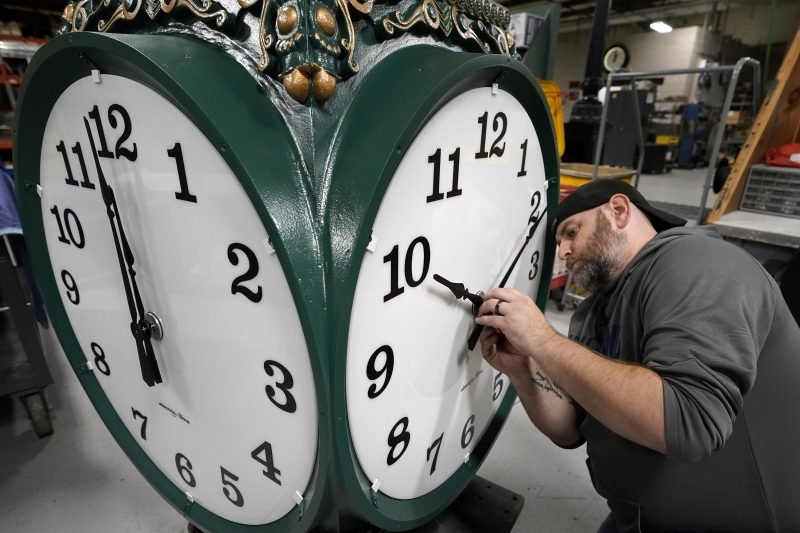
(NEXSTAR) — In just a couple of weeks, daylight saving time will come to an end, pushing our clocks back an hour for roughly four and a half months.
The U.S. has had a back-and-forth relationship with seasonal time changes, and despite state and federal efforts, it’s seemingly unlikely that we’ll stop changing the clocks twice a year anytime soon. There is strong interest in it, however: A YouGov poll from March found that 65 percent of respondents are in favor of eliminating the changing of the clocks.
Among those who said they would like to stop the biannual practice, 34 percent say they would prefer to make daylight saving time — observed from mid-March to early November in all but two states — permanent, compared to 22 percent who would prefer permanent standard time.
While you may fall into the former group, or at least look forward to the clocks changing in March, experts and recent research say the next few months of standard time will have far better impacts on our health than the last seven months of daylight saving time.
Permanent standard time is “undeniably” the best option for our health, “if you believe in science,” Dr. Alaina Tiani, a clinical health psychologist who specializes in behavioral sleep medicine at the Cleveland Clinic’s Sleep Disorder Center, told Nexstar last fall.
It largely has to do with when we have the most daylight. During daylight saving time, there is more daylight in the back half of the day. During standard time, there is more daylight in the morning.
“Having more of that light exposure at those earlier times is essentially better for our body’s rhythms than, you know, the opposite with daylight savings and having the evening light exposure,” Tiani told Nexstar.
When we “fall back” next month, sunrises slide forward by an hour. For some parts of the country, that means moving the sunrise from the 7 o’clock hour to the 6 o’clock hour. If the U.S. were to stay on daylight saving time year-round, sunrises would be much later, nearing 9 a.m. in some areas.
Getting enough sunlight exposure in the morning is important for our melatonin levels, Tiani explained. Morning daylight can also positively impact our circadian rhythm, otherwise known as our internal clocks, which can contribute to other health factors like blood pressure, heart rate and cortisol levels, according to Tiani.
The potential benefits to our sleep and circadian rhythm could have even more positives associated with them, Dr. Karin Johnson, spokesperson for the American Academy of Sleep Medicine (AASM) and co-chair of the Coalition for Permanent Standard Time, previously explained to Nexstar.
During a Senate hearing on daylight saving time earlier this year, Johnson pointed to some of the impacts that sleep and our circadian rhythms can have on our daily lives. Both “regulate every aspect of our body,” she told the Senate Committee on Commerce, Science, and Transportation, and can impact the foods we choose to eat in a day, academic performance in children, and mental health.
“When our circadian rhythms are working well, they help us anticipate our day,” Johnson explained.
While speaking with Nexstar last year, Johnson also pointed to studies that have found relationships between sleep and circadian rhythm deprivation and mental health problems, drug use, speeding, delinquent behaviors, educational performance and employment salaries. Permanent standard time could even result in a decrease in suicide rates, according to another study.
Researchers at Stanford Medicine recently found that, overall, Americans could be healthier if we ditched daylight saving time altogether. For example, their models determined that switching to permanent standard time could result in fewer people being diagnosed with obesity and fewer stroke cases annually. Permanent daylight saving time, on the other hand, would result in roughly two-thirds of the same benefits that permanent standard time was determined to provide, potentially.
Regardless of whether you (or your lawmakers) prefer permanent daylight saving time or permanent standard time, the study — published in the Proceedings of the National Academy of Sciences — determined that changing the clocks twice a year is the worst of the three options.
Nonetheless, our clocks will fall back an hour on November 2 this year.






